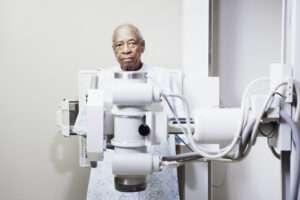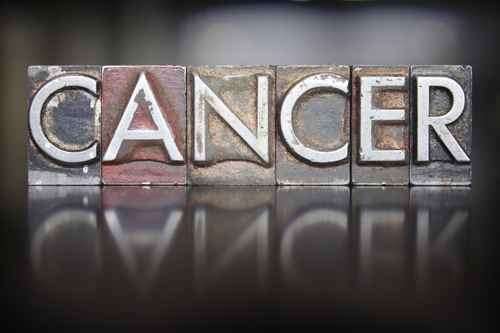Charlie Murphy1, a performer on “The Chappelle Show” and Eddie Murphy’s older brother, has died. His rep Domenick Nati confirmed to Variety that the star lost his battle with leukemia. He was 57.
First of all, this press release doesn’t convey the comical genius of Charlie Murphy. He was one of the best in the comedy field over the last 15 to 20 years. When Jay Harold learned that leukemia killed one of the funniest men on the planet, he felt a duty to write a post about this deadly disease. Using information from the Centers for Disease Control (CDC) and MedlinePlus, Jay Harold hopes that you get a better understanding of leukemia.
Leukemia2 is a cancer of the bone marrow and blood (white blood cells, red blood cells, and platelets). The two main kinds of leukemia are—
- Lymphocytic leukemia (also known as lymphoblastic leukemia), in which the body makes too many of a certain kind of white blood cells, called lymphocytes.
- Myelogenous leukemia (also known as myeloid or myelocytic leukemia), in which the body makes too many of a certain kind of white blood cells, called granulocytes.
Leukemia can be acute or chronic. Acute types of leukemia progress quickly, while chronic types of leukemia progress slowly, leading to different treatments. Leukemia is the most common kind of cancer among children and teens. Acute lymphocytic leukemia is more common among children and adolescents than among adults. However, because other types of leukemia become more common with age, most cases of leukemia occur among adults.
Incidence and Mortality of Leukemia
Leukemia3, the second most common blood cancer after lymphoma, includes several diseases. The four major types are acute lymphocytic leukemia (ALL), chronic lymphocytic leukemia (CLL), acute myelogenous leukemia (AML), and chronic myelogenous leukemia (CML). Although leukemia occurs most often in older adults, it is among the most common childhood cancers. ALL accounts for approximately 75 percent of all childhood leukemias. By contrast, the most common types of leukemia in adults are AML and CLL, followed by ALL and CML. The overall incidence rates of leukemia have increased on average 0.2 percent each year from 2002 to 2011, while overall mortality rates have fallen an average of 1 percent each year from 2001 to 2010. Incidence and death rates are higher in whites than in people of other racial and ethnic groups. Leukemia is slightly more common in men than women. Specific risk factors for leukemia depend on the type of leukemia. In general, increased risk is associated with being male, smoking, exposure to certain chemicals such as benzene, exposure to radiation, past treatment with chemotherapy or radiation therapy, having certain inherited or genetic disorders, having certain blood disorders, and having a family history of leukemia. There are no standard screening tests for leukemia. Depending on the type of leukemia, standard treatments include watchful waiting, chemotherapy, targeted therapy, radiation therapy, and stem cell transplant. Assuming that incidence and survival rates follow recent trends, it is estimated that $5.9 billion1 will be spent on care for patients with leukemia in the United States in 2014.

23,549 people (13,625 men and 9,924 women) died from it in 2013.
What Causes Leukemia?
Scientists do not fully understand all of the causes of leukemia, but research has found many links. For example—
- Repeated exposure to benzene in the workplace, and exposure to large doses of ionizing radiation have been shown to cause leukemia in some cases.
- Tobacco smoke contains cancer-causing chemicals (including benzene), which are associated with acute myeloid leukemia in adults.
- Family history also has been linked with higher risk of some kinds of leukemia, such as chronic lymphocytic leukemia.
- Some people with inherited genetic syndromes such as Down syndrome, or blood disorders such as polycythemia vera, may be more likely to develop leukemia.
- Most individuals with chronic myelogenous leukemia have a gene mutation (change) called the Philadelphia chromosome. It results in the bone marrow making an enzyme, called tyrosine kinase, that causes too many stem cells to become white blood cells. The Philadelphia chromosome is not passed from parent to child.
- White people are more likely than black people to develop lymphocytic leukemia, but scientists do not know why. Scientists also do not know why men are more likely than women to develop leukemia.
What Are the Symptoms of Leukemia?
Chronic lymphocytic leukemia usually does not cause any symptoms and is usually found during a routine blood test. If it does cause symptoms, they can include swollen lymph nodes and feeling tired. Symptoms of chronic myelogenous leukemia include fever, night sweats, and feeling tired. Sometimes chronic myelogenous leukemia does not cause any symptoms. The early symptoms of acute myelogenous leukemia and acute lymphocytic leukemia may be like those resulting from the flu or other common diseases. Symptoms include fever, night sweats, feeling tired, feeling out of breath, and bruising or bleeding easily. These symptoms can also come from other conditions. If you have any of them, talk to your doctor.
Statistics

White people are more likely than black people to develop lymphocytic leukemia.
In the United States in 2013 (the most recent year for which numbers are available)—
- 45,360 people (26,337 men and 19,023 women) were diagnosed with leukemia, and 23,549 people (13,625 men and 9,924 women) died from it.*
- 4,651 people (2,599 men and 2,052 women) were diagnosed with acute lymphocytic leukemia, and 1,425 people (800 men and 625 women) died from it.* Of these, 2,557 cases of acute lymphocytic leukemia were diagnosed among children and teens, and 197 children and teens died from it.
- 15,092 people (9,223 men and 5,869 women) were diagnosed with chronic lymphocytic leukemia, and 4,657 people (2,786 men and 1,871 women) died from it.*
- 14,340 people (7,921 men and 6,419 women) were diagnosed with acute myeloid leukemia, and 9,711 people (5,590 men and 4,121 women) died from it.*
- 5,994 people (3,499 men and 2,495 women) were diagnosed with chronic myeloid leukemia, and 989 people (578 men and 411 women) died from it.*
Among men—
- White men had the highest rate of developing leukemia (17.4 per 100,000 men), followed by Hispanic† men (13.0), black men (12.9), Asian/Pacific Islander men (8.7), and American Indian/Alaska Native men (8.3).
- Hispanic† men had the highest rate of developing acute lymphocytic leukemia (2.4), followed by white men (1.9), Asian/Pacific Islander men (1.2), and black and American Indian/Alaska Native men (1.0).
- White men had the highest rate of developing chronic lymphocytic leukemia (5.9), followed by black men (4.4), Hispanic† men (2.7), American Indian/Alaska Native men (2.3), and Asian/Pacific Islander men (1.2).
- White men had the highest rate of developing acute myeloid leukemia (5.2), followed by Hispanic† men (4.2), black men (4.1), Asian/Pacific Islander men (3.9), and American Indian/Alaska Native men (2.5).
- White men had the highest rate of developing chronic myeloid leukemia (2.3), followed by Hispanic† men (2.0), black men (1.9), Asian/Pacific Islander men (1.3), and American Indian/Alaska Native men (1.0).

White men had the highest rate of developing chronic myeloid leukemia.
Among women—
- White women had the highest rate of developing leukemia (10.6), followed by Hispanic† women (8.7), black women (8.2), American Indian/Alaska Native women (6.5), and Asian/Pacific Islander women (5.9).
- Hispanic† women had the highest rate of developing acute lymphocytic leukemia (1.8), followed by white women (1.4), Asian/Pacific Islander women (1.1), American Indian/Alaska Native women (0.9), and black women (0.8).
- White women had the highest rate of developing chronic lymphocytic leukemia (3.1), followed by black women (2.2), Hispanic† women (1.6), American Indian/Alaska Native women (1.4), and Asian/Pacific Islander women (0.7).
- White women had the highest rate of developing acute myeloid leukemia (3.6), followed by Hispanic† women (3.1), black women (2.9), Asian/Pacific Islander women (2.7), and American Indian/Alaska Native women (2.6).
- White women had the highest rate of developing chronic myeloid leukemia (1.4), followed by black women (1.3), Hispanic† women (1.1), and Asian/Pacific Islander women (0.8). Rates for American Indian/Alaska Native women could not be presented.

Chronic lymphocytic leukemia usually does not cause any symptoms and is usually found during a routine blood test.
Drugs Approved for Leukemia
This page lists cancer drugs approved by the Food and Drug Administration (FDA) for leukemia. The list includes generic and brand names. This page also lists common drug combinations used in leukemia. The individual drugs in the combinations are FDA-approved. However, drug combinations themselves usually are not approved but are widely used. The drug names link to NCI’s Cancer Drug Information summaries. There may be drugs used in leukemia that are not listed here.
Enjoyed this post? Share it and read more here. Jay Harold has put together a Resource page that you may find useful when trying to improve your health and wealth.Please take this advice of Muhammad Ali and give back to others. “Service to others is the rent you pay for your room here on earth.” ~ Muhammad Ali.




